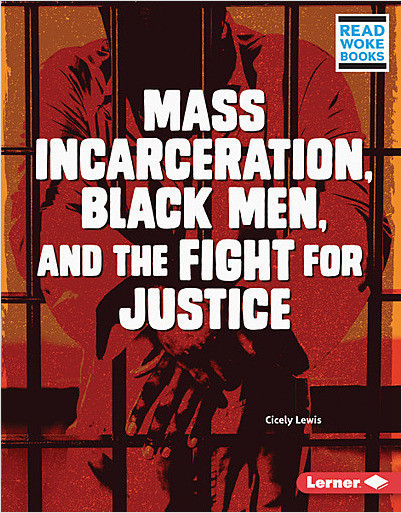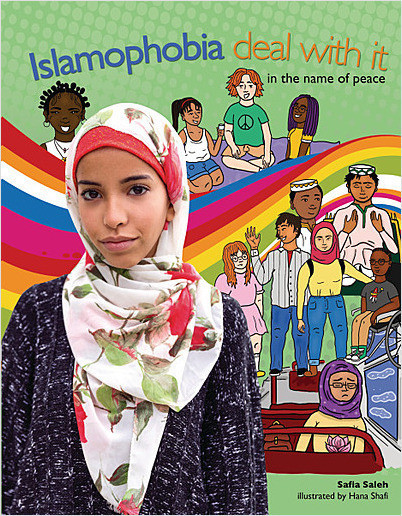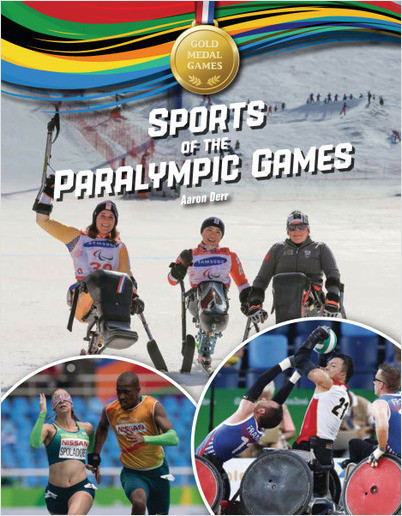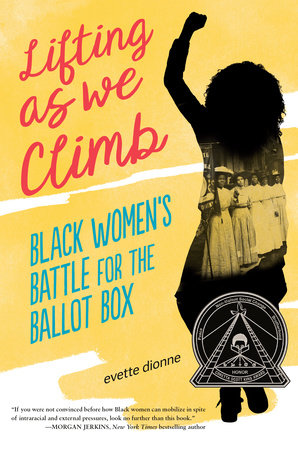Disrupting Nonfiction Part 1: Traditional
- Jennifer LaGarde

- May 3, 2021
- 6 min read
Updated: May 7, 2021
In 2018, Melissa Stewart (author of nearly 200 nonfiction texts for young people) wrote this piece for School Library Journal, detailing five different categories of nonfiction, as a way to help educators understand some of the variances that make up this information rich section of the library. Melissa's upcoming book, of the same title, further unpacks the five categories of nonfiction with an emphasis on how educators can use each type of text to engage readers. Additionally, Lerner Books has created this helpful guide for recognizing and sorting books in each category.
For librarians, the five nonfiction categories that Stewart shares can be a tool for supporting the work of curating nonfiction titles that captivate and inspire many different types of readers. However, I believe they can also be harnessed to help us select informational resources that align with the mission of the Disrupt Texts movement by challenging the traditional canon in order to create more inclusive, representative, and equitable collections.
Why use nonfiction for this work? First, the numerous achievement based reading initiatives that continue to drive literacy instruction (for better or worse) have resulted in an increased demand for nonfiction texts in K-12 classrooms and libraries. (Crisp et al, 2017) Secondly, I've known a lot of readers for whom nonfiction was their bridge to literacy. It didn't matter how many times I enthusiastically recommended works of fiction, those kids still gravitated towards the latest Book of World Records or the same book about military vehicles they'd already read hundreds of times. That said, while efforts to improve diversity in literature published for young people continue to progress at frustratingly slow rates, that progress has been even slower to reach the nonfiction shelves.
With that in mind, this series of five blog posts will serve as a guide for practicing “disruptive collection development” in the context of the nonfiction collection. Each day we’ll explore a different category of nonfiction along with strategies for thinking critically about the collection development procedures that we employ for selecting, cataloging and shelving those books. While the suggestions for each category were designed to support readers who may find a home in each unique type of nonfiction, the disruptions themselves are interchangeable and may also be applied to the broader collection.
Part 1: Traditional Nonfiction (You are here!)
Part 2: Active Nonfiction
Part 3: Narrative Nonfiction
Part 4: Expository Literature
Part 5: Browsable Nonfiction
The goal of “disruptive collection development” is to move beyond the occasional infusions of inclusivity offered by intentionally adding, or even focusing on, historically marginalized voices in book ordering throughout the year. While this is surely a best practice, it’s also a strategy that is rendered inconsistent and temporary by its dependence on the whims of staffing and funding. Only through holistic, purpose driven collection development can we move toward more permanent change that is both systemic and procedural.
Finally, thank you to the team of Disrupt Texts who were early readers of these posts and who gave me permission to use the term "disrupt" in this context.
Let's get started!
Category 1: Traditional Nonfiction
Definition: “Survey books (aka “all-about”) books that provide a general overview of a topic. These traditional titles, often published in large series, emphasize balance and breadth of coverage, with language that is clear, concise, and straightforward. They have an expository writing style that explains, describes, or informs, and typically employ [sic] a description text structure.” (Stewart, 2018)
Features:
Survey (all about) books
Overview of a topic
Often part of a large series
Clear, straightforward language
Expository writing style
Description text structure
Disruptive collection development:
Using Data: The nonfiction section of your collection is vast and varied. Data can help you identify areas that are ripe with potential for needed changes. Here are some tips for using data to set priorities:
Use circulation data to locate highly circulated titles/series and make them your focus. Series and standalones with high engagement rates should be first on the list for disruption, because these texts spend most of their library life in the hands of readers, where they can do the most good (or harm). Once you have your list, audit these popular books to ensure they contain titles that are written, edited and illustrated by historically marginalized voices such as LBGTQIA+, BIPOC and/or differently abled creators.
In the catalog: Even though most librarians upload ready made marc records, these automated additions to your opac represent an opportunity for critical analysis and disruption. Here are some tips for becoming a disruptive cataloger:
Use the sections of the collection that you've prioritized (above) and then review and update subject headings to those that are more accurate and inclusive. For example, if headings like “oriental” (not referring to a rug) or “indian” (not referring to someone from India) or “handicap” (not referring to golf) still exist in your marc records, change them to more accurate and inclusive terms like, Asian American, Pacific Islander, Indigenous People or Differently Abled. etc. In a later post, we'll discuss how to prioritize these headings with an emphasis on reader needs, but for now just focus on making sure they are accurate and inclusive.
Standardization here will be important to ensure that the same subject headings are used consistently throughout the collection. Be intentional and give time and purpose to making these decisions, with the understanding that this is a marathon not a sprint. What's more, scrutinizing subject headings with equity in mind is ongoing work. As our understanding of the world evolves, so too should the ways in which we catalog materials to help our readers discover that world.
If marc records are shared across a district, it’s time to organize a committee to determine the new subject headings that will become the standard for all cataloging district-wide. Be sure that this committee includes voices from the very populations whose representation needs reflection in updated subject headings. If those voices do not exist among the library staff in your district, recruit community members to help. This invitation to participate in how the library functions will only help your community feel more invested in what you do.
The marc records you purchase with books likely rely on LCC or Sears subject headings which are notoriously slow to change. It will be up to you, and your team, to drive disruption in your catalog for the benefit of readers.
Selection: The circulation data you’ve mined will help you prioritize titles/series for further scrutiny. Update or remove titles that perpetuate stereotypes, by referring to weeding guidelines that support culturally responsive pedagogical practices. While your LMS likely provides reports that identify candidates for discard based on age and circulation, these statistics alone won't provide you what you need to tackle the work ahead. When it comes to library collections, currency also refers to the idea that in order to be truly "up to date," our resources must reflect an equitable, justice oriented world view. That said, while these posts aren’t about weeding specifically, it’s important to remember that we are not archivists. We are educators. We are not curators of book museums. We are conduits of information. Our job is to connect our patrons (be they students or teachers or other members of our school community) with the BEST resources available. Books that rely on stereotypes to categorize a lived experience do not fit into the definition of what is BEST for kids. Questions to guide your work include:
whose voices are missing from the most popular traditional nonfiction in your library?
do titles with the highest circulation reflect your focus on equity and inclusion?
The answers to those questions should help you quickly identify new series and standalones to replace and complement existing holdings. This is also a good time to review lists of recent youth media award winners and then conduct a reverse audit to determine:
which recent award winners represent inclusive informational texts?
how many of those exemplars are already included in your collection?
On the shelf: Of course, it's not enough to do all of this work and then simply purchase new books for your collection. Shiny new books will likely remain on the shelf, which is not what they were made for, if you haven't made efforts to share them with readers.
Both before and after new titles arrive, go to the shelf and front face books that amplify diverse experiences, authors and artists.
Build displays that also share the work that went into selecting your new traditional nonfiction titles. By sharing your process for disrupting collection development practices in your library, not only will you be helping your community understand how librarians work, but this transparency will also give them a glimpse into what you value as someone who has devoted your professional life to readers.
Remember, in addition to seeing traditionally underrepresented voices reflected in the content on the page, it’s also essential that readers see those same voices on the covers of the books they read. We want all readers to recognize that anyone can be (and are!) authors, illustrators and experts.
Recommended titles: Some recently published titles that can help you disrupt the traditional nonfiction include:
Click on each image for more information about the book.
What's next?
In the days ahead we'll look at all of Melissa Stewart's nonfiction categories through the lens of disruptive collection development practices. Tomorrow, we'll take a deep dive into Active Nonfiction in order to think about how to leverage these participatory titles to create more inclusive, representative, and equitable collections.
Acknowledgements:
Thank you again to the founders of Disrupt Texts (Tricia Ebarvia, Lorena German, Dr. Kim Parker, and Julia Torres) for allowing me to partner with them in this work.
Thank you to Becky Calzada, Lynsey Burkins, Franki Sibberson, John Shu and Donalyn Miller for being early readers of this work and for offering your expert feedback.





















